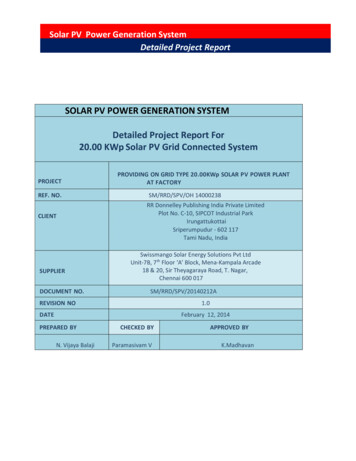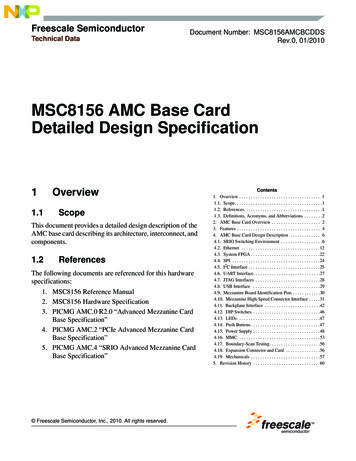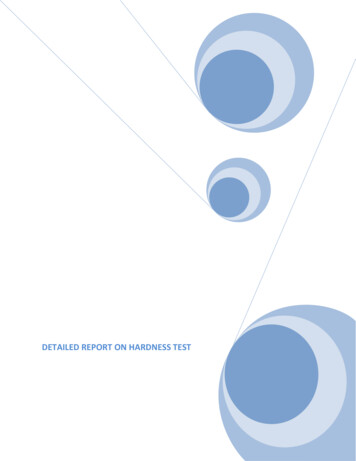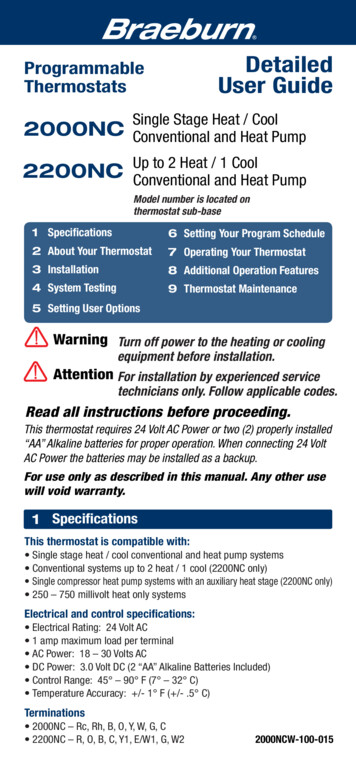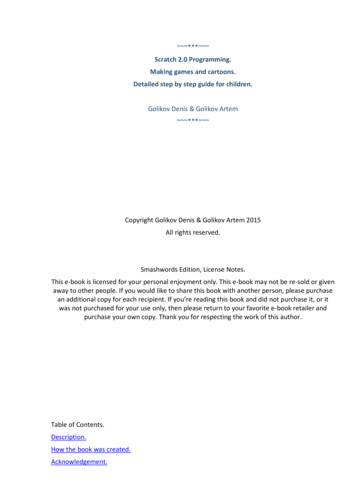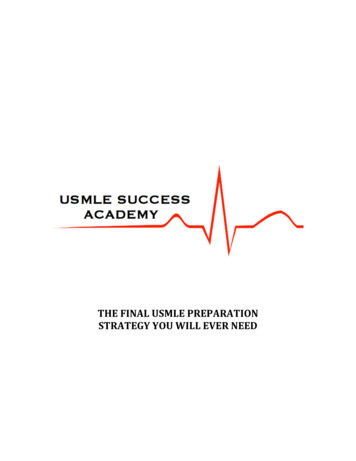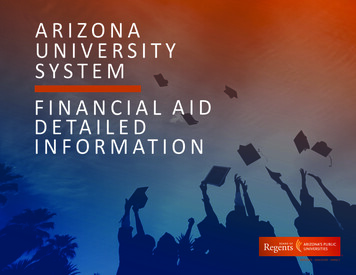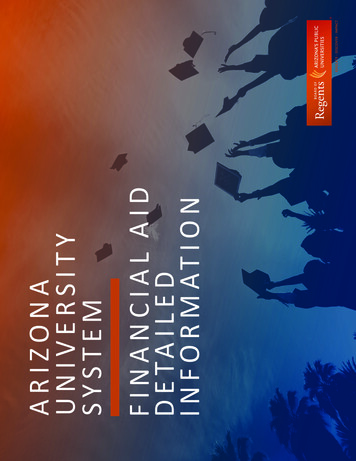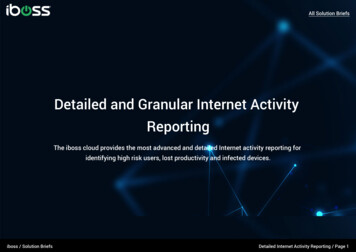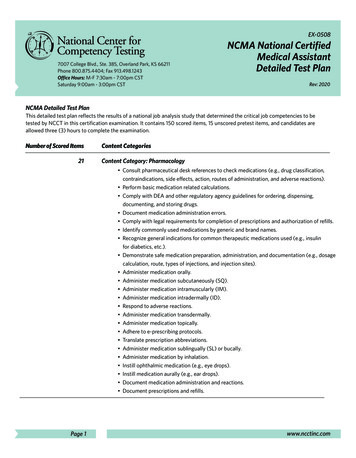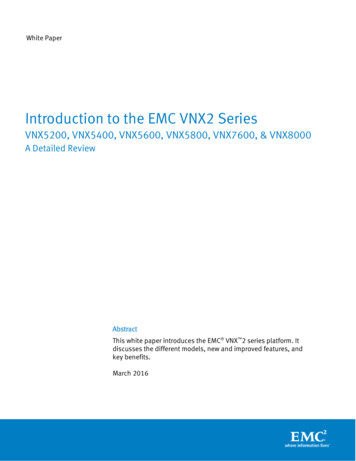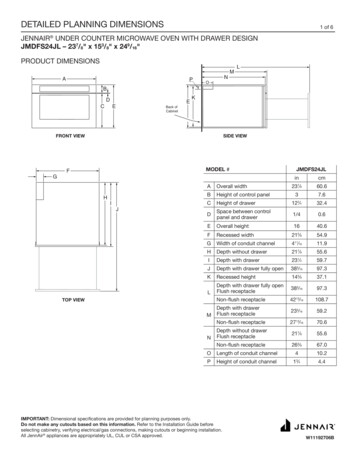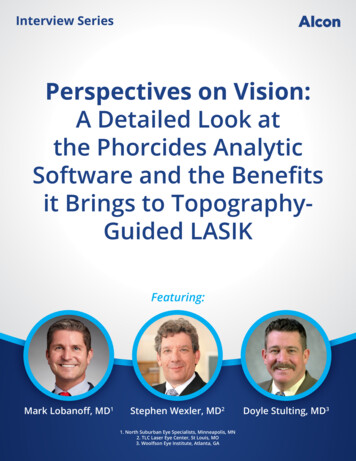
Transcription
Interview SeriesPerspectives on Vision:A Detailed Look atthe Phorcides AnalyticSoftware and the Benefitsit Brings to TopographyGuided LASIKFeaturing:Mark Lobanoff, MD1Stephen Wexler, MD21. North Suburban Eye Specialists, Minneapolis, MN2. TLC Laser Eye Center, St Louis, MO3. Woolfson Eye Institute, Atlanta, GADoyle Stulting, MD3
IntroductionTopography-guided laser-assisted in-situ keratomileusis (LASIK) considers the shape of the anterior corneal surfaceand uses corneal curvature data from preoperative corneal topography measures. These treatment profileshelp reduce higher order aberrations (including spherical aberration) by compensating for cosine effect and bynormalizing the overall surface of the cornea. This is done by flattening elevations and relatively steepening flatterareas by ablating around them.Determining the correct sphere magnitude, cylinder magnitude and cylinder axis for treatment with topographyguided LASIK has been a dilemma among surgeons. With the recent introduction of the Phorcides analytic software,treatment planning can be simplified and the treatment accurately calculated with the exact treatment profilerequired without further calculations by the surgeon.1,2Mark Lobanoff, MD, Stephen Wexler, MD and Doyle Stulting, MD discuss Phorcides technology and the clinicalbenefits it brings to topography-guided LASIK.Mark Lobanoff, MDNorth Suburban Eye Specialists,Minneapolis, MNWhat is topographyguided LASIK?Topography-guided LASIK is treatment based on the unique corneal topography of anindividual’s eye. It not only treats sphere and cylinder, but also treats corneas differentlythan any other prior laser refractive technology by essentially smoothing topographicalirregularities on the corneal surface. By reducing the surface irregularities and creating amore uniform corneal surface, better vision can be achieved.How do surgeonscomplete surgicalplanning fortopographyguided LASIK?The specific treatment planning approach for topography-guided LASIK is dependent onthe laser platform and manufacturer, but all generally use similar clinical data to guidethe treatment. For example, the Contoura Vision platform is a topography-guided LASIKprocedure approved in the United States where the following treatment planning approacheshave been used: 1) manifest refraction, 2) TMR, 3) 50/50, and 4) Phorcides software.Treatment planning on this platform was originally based solely on the manifest refractionastigmatism; however, this method did not provide optimal results. The topographicirregularities on the cornea contribute to the manifest refraction measured by manualrefraction at the phoropter. This means that removal of the topographic irregularities willaffect the resulting manifest refraction. By ignoring the refractive effect of eliminating thetopographic irregularities, surgeons did not see visual outcomes as good as they expected.Additionally, if the topographic irregularities are large, the astigmatic axis resulting fromtreating the manifest could result in significant residual errors.1 A contrasting method,topography-modified refraction (TMR), based treatment on the anterior corneal astigmatismmeasured by topography, ignoring the manifest refraction.3 Overall, the results of TMR werebetter than treating based on the manifest refraction.4 However, there were cases in whichthis strategy led to the astigmatic axis being “flipped” after surgery. In other cases, residualastigmatism remained that kept patients from achieving their best vision. Over time, the50/50 method was developed by Dr. Wexler. This method used 50% of the difference inmagnitude between manifest and topography measured along with the axis measured bytopography. This method yielded good results and almost never flipped an astigmatic axis.However, it often left behind some untreated astigmatism and thus resulted in some residualrefractive errors that reduced the overall uncorrected distance visual acuity (UDVA).
Why was thePhorcides analyticsoftware created?Given that so many treatment planning methods have been utilized for topography-guidedLASIK, it was clear that a more standardized and objective approach was needed – one basedon logic, mathematics, and optical physics. And this led to the development of the Phorcidesanalytic software. Phorcides was created to provide a definitive treatment calculation to maketopography-guided LASIK planning easier and more accurate for surgeons.What is the Phorcidesanalytic software?Phorcides is a program that uses geographic imaging software to analyze the anteriortopographic profile of an individual’s cornea (Figure 1 and 2). It takes into account anteriortopographic data from the Placido Disc-based Topolyzer Vario, along with anterior andposterior corneal astigmatism data from a Scheimpflug topographer. The Phorcides softwaremeasures the radius of each topographical feature, or talus, and uses all this information todetermine the true anterior corneal astigmatism (Figure 2). The software compiles a series ofrefractive vectors: one vector for each raised topographic feature on the corneal surface, onefor the anterior corneal astigmatism, one for the posterior corneal astigmatism, and one forany internal lenticular astigmatism (Figure 3). Finally, it uses a series of advanced computeralgorithms to determine an optimized sphere and cylinder magnitude and orientation for thetreatment. Of course, starting with a good manifest refraction and quality topography imagesare essential for calculating the correct treatment.Figure 1: Anterior cornealtopographic treatment imagefrom the Contoura Visionplanning laptop.Figure 2: The Phorcidesanalytic software usesgeographic imaging software(GIS) to analyze the cornealtopographic treatment imageproduced by the Contoura Vision planning laptop. Eachtalus radius is measured,and its refractive effect isanalyzed.
Figure 3: The Phorcidesanalytic software determinesthe low-order astigmatic vectorcreated by all sources (anteriorcornea, posterior cornea andlenticular) and uses vectoraddition to calculate the finalastigmatic vector.How does planningtopography-guidedLASIK treatments withPhorcides softwarecompare to planningtreatment with othermethods (manifest,TMR, 50 / 50)?The Phorcides software uses more data and takes the analysis of each eye further than othermethods currently allow. For example, none of the other methods currently take into accountposterior corneal astigmatism or internal (lenticular) astigmatism the way that Phorcides does.The other methods also do not use a mathematical model to determine the optical effects ofremoving topographic irregularities from the cornea. Finally, the Phorcides software removessome of the subjective decision-making required by the other methods (i.e. determining thecorrect balance between manifest and topography cylinder) and allows for a more objectiveand calculated approach to treatment.
Stephen Wexler, MDTLC Laser Eye Center,St Louis, MOHow do you decide iftopography-guidedLASIK is the righttreatment fora patient?Figure 4: Example of agood quality image withTopolyzer Vario.Figure 5: Example of a poorquality image with Topolyzer Vario due to central drynessand upper lid interference.Doyle Stulting, MDWoolfson Eye Institute,Atlanta, GADr. Wexler: I consider using topography-guided LASIK on all my routine refractive surgerypatients. My main criterion for using topography-guided LASIK is whether I get good cornealtopography measurements or not (Figure 4 and 5). If I get good scans, and Phorcides cancalculate a treatment, then I use topography-guided LASIK programmed with Phorcides.Dr. Stulting: I recommend topography-guided LASIK for all refractive surgery patients thatwe are able to treat with this technology. There are times when I have to opt for a differenttreatment (e.g. WFO) such as when the refraction is outside of the FDA approved treatmentrange for Contoura or when adequate topography scans cannot be obtained. Scans aresometimes difficult in patients with deep-set eyes or difficulty opening their lids. For manyof them, these difficulties can be overcome by using an assistant to help with the lids or achange in the position of the head. Ocular surface disease can cause an unstable tear film,which can interfere with the capture of an acceptable corneal topography image (Figure 5). Inthese cases, it is important to manage the ocular surface disease before performing LASIK.
How does usingthe Phorcidessoftware impactyour confidence inthe final treatmentplan for topographyguided LASIK?Dr. Wexler: It is just impossible to look at a higher order aberration map and know exactlyhow much influence the irregularities will have on the treatment, and I used to strugglewith how to incorporate these into the treatment plan. Before Phorcides, I often used acombination of manifest cylinder and corneal cylinder but never really knew if it wouldbe the optimal treatment amount, particularly when there were large disparities betweenthe manifest- and topography-measured astigmatism. Phorcides takes the guesswork outof topography-guided LASIK treatment planning. I am much more confident now with thedefinitive calculation that it provides! One of the great things about using Phorcides is thatwe rarely see a flipped axis anymore, whereas we used to see it on occasion with manifestrefraction and TMR.Dr. Stulting: Treatment with topography-guided LASIK is state-of-the-art, but Phorcidestakes us a step beyond what manifest and topography measured treatment planning canoffer. Phorcides not only takes into account the effect of localized aberrations in the anteriortopography, but also the posterior corneal surface. It allows calculation and incorporation ofinternal astigmatism into the treatment plan. This allows for an accurate determination of thelow-order astigmatism magnitude and axis needed for treatment planning. With this, I ammuch more confident that the final calculated result will be the optimal treatment and givemy patients the best possible visual outcome.What are thedifferences betweenthe Phorcidesanalytic software andother nomograms?Dr. Wexler: Phorcides is different than a nomogram in that it provides a calculated treatmentstrictly based on data from that individuals eye rather than averaged data from other patienteyes. I do keep track of all my outcomes on IBRA and have a sophisticated nomogrambased on thousands of eyes. While I do use this to adjust sphere and cylinder for wavefrontoptimized treatments, I don’t need to do this for topography-guided LASIK. I can just go withthe Phorcides calculated numbers and know that I will get great results. I still alter my targetgoals based on age, and Phorcides allows me to easily do that.Dr. Stulting: Nomograms calculate the average result of past treatments, compare it tothe desired outcome, and adjust treatments accordingly. These adjustments are based onaverage outcomes obtained from large databases. Phorcides, on the other hand, makescorrections in the treatment plan based on factors that are characteristic of the individual,rather than database averages. So Phorcides provides an accurate, individualized plan thatnomograms alone cannot provide.What does theclinical data showfor Phorcides versusmanifest / TMR?Dr. Wexler: Outcomes are similar and speak to the fact that Contoura Vision is a veryeffective treatment. However, we just published a retrospective study that showed a higherpercentage of patients achieving postoperative 20/15 by planning with Phorcides, rather thanthe manifest refraction (Figure 6).1 That study also showed that more patients gained 1 ormore lines of UDVA compared to their preoperative corrected distance visual acuity (CDVA)with Phorcides (Figure 7).Dr. Stulting: Along with other users of Contoura Vision, we retrospectively studied theactual and calculated refractive cylinder outcomes of Contoura Vision programmed with themanifest refraction, topographically measured refraction (TMR), and Phorcides. This studyshowed that the best outcomes were obtained with Phorcides.2 A prospective study iscurrently underway to confirm these findings and analyze subjective quality of visionobtained with Phorcides.
Figure 6: Postoperativeuncorrected distance visualacuity (UDVA) by group(n 317 manifest, n 323Phorcides; p 0.002; X2 test).Figure 7: Differencebetween the postoperativeuncorrected distancevisual acuity (UDVA) andpreoperative correcteddistance visual acuity (CDVA)(n 317 manifest, n 323Phorcides; p 0.002; X2 test).What does visualacuity data showfor Phorcides (orContoura Vision ingeneral) versus othertreatment options(WFO / WFG)Dr. Wexler: Wavefront optimized (WFO) and topography-guided LASIK routinely get greatresults -especially at the 20/20 level. However, there are two large head-to-head studies thatshowed a higher percentage of patients achieving 20/15 or better with Contoura Visionversus WFO treatment (Figure 8 & 9).4,5 Stonecipher (2018)4 also showed that Contoura Vision allowed for a higher percentage of both 20/20 and 20/15 or better, compared towavefront-guided (WFG) treatment (Figure 8).Dr. Stulting: While WFO generally provides great outcomes, recent studies have shown thatmore patients can achieve 20/15 or better with Contoura Vision (Figure 8 & 9).4,5 Theaddition of Phorcides makes the treatment even more accurate with higher rates of 20/15 orbetter (Figure 6).1
Figure 8: Postoperativeuncorrected distance visualacuity (UDVA) among varioustreatment types4(n 27 WFG; n 430 WFO;n 416 Contoura manifest).Figure 9: Postoperativeuncorrected distance visualacuity (UDVA) among varioustreatment types5(n 788 WFO; n 1027Contoura manifest; n 338Contoura Phorcides).Are there any datathat show an effectof topography-guidedLASIK on ocularaberrations andquality of vision?Dr. Wexler: There is a large study by Zhang et al (2019)6 that showed that total higher orderaberrations and coma were significantly lower with Wavelight Contoura Vision vs WFO at 1 and6 months postoperatively (p 0.05). There are several other smaller studies with similarfindings,7–9 but more research is needed in this area.Dr. Stulting: The FDA study for Contoura Vision showed a reduction in total RMS magnitudefor 2nd through 5th order corneal aberrations which reflects the overall effect of topographyguided LASIK on corneal irregularities. This study also showed that pre-op visual symptoms oflight sensitivity, difficulty with night driving, reading difficulty and glare, significantly improvedpostoperatively.10 These data allow us to tell our patients truthfully that the quality of theirvision after treatment may be better than it was before treatment with the best glasses thatcould be prescribed.
Are there any datato indicate thatusing the Phorcidessoftware wouldimprove ocularaberrations or qualityof vision more thanother treatmentplanning options(manifest, TMR, etc)?Dr. Wexler: So far, we don’t have much data on this for Phorcides. As mentioned earlier, thereis improvement in post-op UDVA, compared to the pre-op CDVA, and this may be a result ofreduced aberrations producing better visual quality. We are currently starting a prospectivestudy using Phorcides and will be looking at this. So, we will have more data soon.What impact does thePhorcides softwarehave on your approachto implementingtopography-guidedLASIK in your practice)?Dr. Wexler: It just takes the guess work out of programming the laser. It really helps increaseyour confidence level because it is easy to use and gives great results. I could not go back toNOT using it! I would recommend Phorcides for anyone using Contoura Vision.Dr. Stulting: Specific data on aberration profiles and quality of vision specific to Phorcides arecurrently limited; however, our upcoming prospective study will provide this information.Dr. Stulting: Contoura Vision with the addition of the Phorcides software allows surgeonsto feel confident that the calculated cylinder magnitude and axis are the optimal treatmentand provides surgeons with the opportunity to give patients better vision than they have everhad.1,5 Before Phorcides became available, we performed extensive calculations to determinethe correct refractive input for treatment planning. We were always concerned that we mightmake a calculation error and end up with a bad result. I would recommend topographyguided LASIK with Contoura Vision using Phorcides to all other surgeons. I expect those whoare dedicated to providing their patients with the best possible outcomes will adopt thistechnology.ConclusionTopography-guided LASIK, specifically using Contoura Vision with the Phorcides analytic software, allows for ahigher percentage of patients to reach 20/15 or better. Phorcides takes into account the effects of not only anteriorastigmatism, but also posterior and lenticular astigmatism, where other treatment planning options do not allow forthis. Phorcides helps surgeons avoid the need to determine the sphere and cylinder components and, it allows themto feel confident that the calculated result is the optimal treatment plan for each individual patient.
References1.Lobanoff M, Stonecipher K, Tooma T, Wexler S, Potvin R. Clinical outcomes after topography-guided LASIK: comparing results based on a newtopography analysis algorithm to those based on the manifest refraction. Journal of Cataract and Refractive Surgery. 01762.Stulting RD, Durrie DS, Potvin RJ, et al. Topography-Guided Refractive Astigmatism Outcomes: Predictions Comparing Three DifferentProgramming Methods. OPTH. 2020;14:1091-1100. doi:10.2147/OPTH.S2440793.Kanellopoulos A. Topography-modified refraction (TMR): adjustment of treated cylinder amount and axis to the topography versus standardclinical refraction in myopic topography-guided LASIK. OPTH. 2016;10:2213-2221. doi:10.2147/OPTH.S1223454.Stonecipher K, Parrish J, Stonecipher M. Comparing wavefront-optimized, wavefront-guided and topography-guided laser vision correction:clinical outcomes using an objective decision tree. Current Opinion in Ophthalmology. 2018;29(4):277-285. doi:10.1097/ICU.00000000000004955.Stonecipher K, Tooma T, Lobanoff M, Wexler S. Outcomes of Planning Topography-Guided LASIK with New Analytic Software Vs. Planning withManifest Refraction in Eyes with T-CAT Parameters. In: Virtual ASCRS Presentation. Boston, MA. 2020. ; 2020.6.Zhang Y, Chen Y. A Randomized Comparative Study of Topography-Guided Versus Wavefront-Optimized FS-LASIK for Correcting Myopia andMyopic Astigmatism. J Refract Surg. 2019;35(9):575-582. doi:10.3928/1081597X-20190819-017.El Awady HE, Ghanem AA, Saleh SM. Wavefront-Optimized Ablation Versus Topography-Guided Customized Ablation in Myopic LASIK:Comparative Study of Higher Order Aberrations. Ophthalmic Surg Lasers Imaging. 2011;42(4):314-320. doi:10.3928/15428877-20110421-018.Ozulken K, Yuksel E, Tekin K, Kiziltoprak H, Aydogan S. Comparison of Wavefront-Optimized Ablation and Topography-Guided Contoura AblationWith LYRA Protocol in LASIK. J Refract Surg. 2019;35(4):222-229. doi:10.3928/1081597X-20190304-029.Shetty R, Shroff R, Deshpande K, Gowda R, Lahane S, Jayadev C. A Prospective Study to Compare Visual Outcomes Between Wavefront-optimizedand Topography-guided Ablation Profiles in Contralateral Eyes With Myopia. J Refract Surg. 2017;33(1):6-10. doi:10.3928/1081597X-20161006-0110. Stulting RD, Fant BS, Bond W, et al. Results of topography-guided laser in situ keratomileusis custom ablation treatment with a refractive excimerlaser. Journal of Cataract & Refractive Surgery. 2016;42(1):11-18. doi:10.1016/j.jcrs.2015.08.016WAVELIGHT EXCIMER LASER SYSTEMS IMPORTANT PRODUCT INFORMATION:This information pertains to all WaveLight Excimer Laser Systems, including the WaveLight ALLEGRETTO WAVE , the ALLEGRETTO WAVE Eye-Q andthe WaveLight EX500.Caution: Federal (U.S.) law restricts the WaveLight Excimer Laser Systems to sale by or on the order of a physician
Mark Lobanoff, MD1 1.North Suburban Eye Specialists, Minneapolis, MN 2.TLC Laser Eye Center, St Louis, MO 3.Woolfson Eye Institute, Atlanta, GA Stephen Wexler, MD2 Doyle Stulting, MD3 Perspectives on Vision: A Detailed Look at the Phorcides Analytic Software and the Benefits it Brings to Topography-Guided LASIK Featuring: Interview Series
